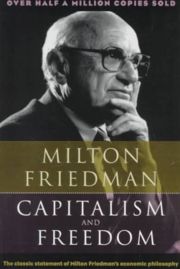
A book called Atlas Shrugged was published in 1957. I read it in 2001. There were two kinds of people in the book, the people who were pure evil and those who were unparalleled in their goodness. I thought, when I read it that this was a very unrealistic view of the world. In the book, the evil people scheme unrelentingly with a façade of doing a great help to the society and the good people initially bear these obnoxious atrocities without batting an eyelid. I thought, when I read the book that the ways of the world was not so "black and white", and that there have to be many shades of gray in between.
Over the past five years, one by one these shades of gray have started disappearing. But still, come on! There are still shades of gray, right? I mean that book was too much! Take for instance this court scene in this book. There is this brilliant industrialist who is single handedly capable of keeping the economy afloat and he is being prosecuted for something as stupid as selling his product to another company when there is some government regulation which prohibits this. Here is a small excerpt from this court scene “drama”
… He noted the stillness in the room. By the rules of complicated pretense which all those people played for one another’ benefit, they should have considered his stand as incomprehensible folly; there should have been rustles of astonishment and derision; there were none, they sat still; they understood.
“Do you mean that you are refusing to obey the law?” asked the judge.
“No. I am complying with the law – to the letter. Your law holds that my life, my work and my property may be disposed of without my consent. Very well, you may now dispose of me without my participation in the matter. I will not play the part of defending myself where no defense is possible, and I will not simulate the illusion of dealing with a tribunal of justice.”
“But, Mr. Rearden, the law provides specifically that you are to be given an opportunity to present your side of the case and to defend yourself”
“A prisoner bought to trial can defend himself only if there is an objective principle of justice recognized by his judges, a principle upholding his rights, which they may not violate and which he can invoke. The law, by which you are trying me, holds that there are no principles, that I have no rights and that you may do with me whatever you please. Very well. Do it.”
“Mr. Rearden, the law which you are denouncing is based on the highest principle – the principle of the public good.”
“Who is the public? What does it hold as good? There was a time when men believed that ‘the good’ was a concept to be defined by a code of moral values that no man had the right to seek his good through the violation of the rights of another. If it is now believed that my fellow men may sacrifice me in any manner they please for the sake of whatever they deem to be their own good, if they believe that they may seize my property simply because they need it – well, so does the burglar. There is only this difference: the burglar does not ask me to sanction his act.”…
{A few paragraphs and dialogues later}
“But we are giving you a chance to defend yourself – and it is you who are rejecting it.”
“I will not help you to pretend that I have a chance. I will not help you preserve an appearance of righteousness where rights are not recognized. I will not help you preserve an appearance of rationality by entering a debate in which a gun is the final argument. I will not help you to pretend that you are administering justice.”
“But the law compels you to volunteer a defense!”
There was laughter at the back of the courtroom.
“That is the flaw in your theory, gentlemen.” Said Rearden gravely, “and I will not help you out of it. If you choose to deal with men by means of compulsion, do so. But you will discover that you need the voluntary co-operation of your victims, in many more ways than you can see at present. And your victims should discover that it is their own volition – which you cannot force – that makes you possible. I choose to be consistent and I will obey you in the manner you demand. Whatever you wish me to do; I will do it at the point of the gun. If you sentence me to jail, you will have to send armed men to carry me there – I will not volunteer to move. If you fine me, you will have to seize my property to collect the fine – I will not volunteer to pay it. If you believe that you have the right to force me – use your guns openly. I will not help you to disguise the nature of your action.”
Although this may seem out of context when read here, what the excerpt conveys is a logical fallacy. The judges are unable to pretend about the righteousness of their "laws" when the victim refuses to recognize the crime. If the victim refuses to voluntarily accept his “guilt” the tribunal is unable to interpret its own laws. I thought, when I read the book, that this was very unrealistic. I mean, what’s with all the volunteering? Surely, nobody would want another to voluntarily accept a noose around his own neck?
Today I saw an interview of Ms. Meira Kumar, Honorable Minister for Social Justice and Empowerment, conducted by Karan Thapar on CNBC TV18 on the topic of Reservations in the private sector. I would like to provide another excerpt, but as I do not have it verbatim, I will try to provide the gist. (*)
The topic revolved around the subject of whether the industry should be forced into accepting the reservations for SC/STs. After many instances of when the honorable minister shouted her way away from answering many of Mr. Thapar’s questions directly, there came her way a question.
Karan Thapar: “Minister, if the captains of industry (whom you have asked to come back with details of how many SCs and STs they have on their rolls) come back and tell you, that they do so in sufficient numbers what would you do then?”
Meira Kumar: “That’s too hypothetical a situation”
Karan Thapar: “But you want to base your decision to impose reservations on hypothetical data, which even your government data shows to be wrong, but here you do not want to answer a hypothetical question.”
Meira Kumar: “No, I will have to apply myself to this”
Karan Thapar: “Would you be verifying their data?”
Meira Kumar: “No, you are making it out that as though I am suspecting the captians of industry. I mean I will have to apply myself to this. I will have to look at what course of action I can take.”
Karan Thapar: “What would be your response to this after you have applied yourself to this. Would you then impose this reservation? What would be the course of action you take?”
Meira Kumar: “I don’t have to disclose every action I intend to take on television. It was I who told them [the industry] to check that they may already have SCs and STs on their rolls. Don’t be averse to having SC/STs on your rolls.”
Karan Thapar: “Yes, and if the industry has sufficient numbers already, then?”
Meira Kumar: “No, I will have to apply myself to this. I cannot say what my course of action would be. We don’t want it to be forced; we want the industry to create reservations in their rolls voluntarily.”
That’s when I realized that one more shade of gray had forever disappeared. This debate was very similar to the prosecution of Mr. Rearden in that book. This was not only about imposing reservations to some backward caste, tribe, class, sect etc in private sector. This was also about wanting the industry to voluntarily do it. Voluntarily hire people based not on the merit of being able to do the job, but being born in a backward segment of society. Voluntarily put a spanner in a running machine and pretend it is in the effort to administer justice. Voluntarily put a noose around one’s own neck and pretend it is the highest principle - the principle for the public good.
I realized that amongst my gray shades of doubt, one hue had become black. It proved the existence of a kind of rot in society which wanted others to volunteer guilt where none existed. It has also made me realize that I must look for those who when faced with such a request would react as Mr. Rearden reacted in the book at the end of that trial, by saying,
“… If it is now the belief of my fellow men, who call themselves the public, that their mood requires victims, then I say: The public good be damned, I will have no part of it!”
Notes
(*) Please note that the dialogue posted here between Ms. Meira Kumar and Mr. Karan Thapar is not the exact transcript and has been written in my words, about what I heard transpired in that interview. If anybody can provide me with the actual transcripts I would immediately replace the same here.
References
1. Atlas Shrugged by Ayn Rand, Signet Books, 1957











